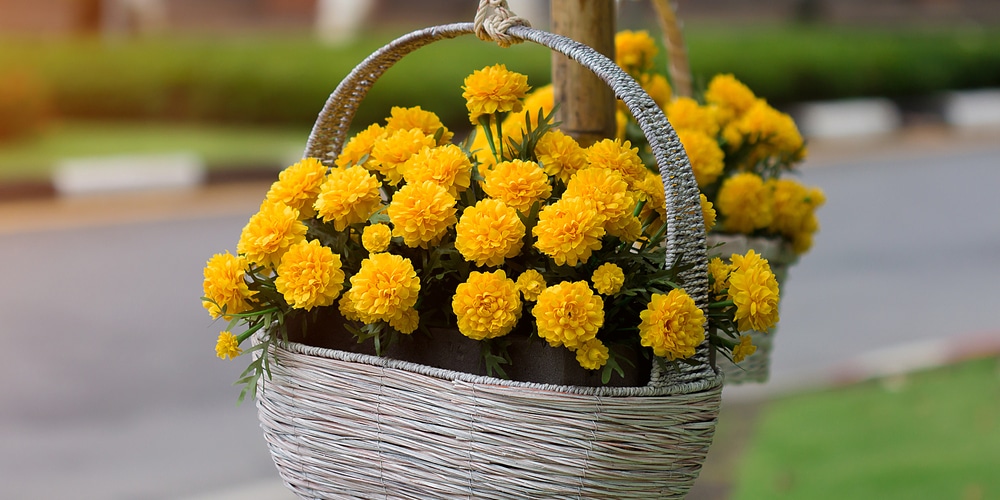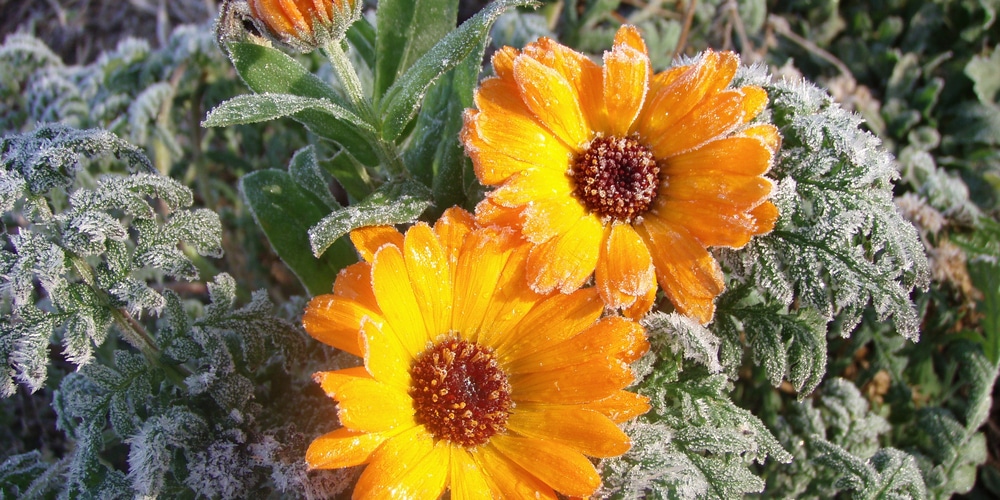It’s that time of year again! The leaves are changing color, the days are getting shorter, and the weather is getting a little chilly. For gardeners, this means it’s time to start thinking about frost. Frost can be harmful to plants, but you can help your marigolds survive with a bit of preparation. This article will discuss tips and tricks for protecting your marigolds from frost damage.
Can Marigolds Survive Frost?

As any gardener knows, not all flowers are created equal in cold weather. Some varieties, like petunias and impatiens, are annuals that will only last one season before they need to be replaced. Like pansies and violas, others are hardy enough to withstand a frost or two. But what about marigolds? Are these vibrant blooms frost-resistant?
The short answer is yes and no. Most marigolds thrive in warm, dry conditions, but marigolds can be grown successfully anywhere outdoors as long as the temperature remains above 40°F. Most garden marigolds are annual. And even though they are hardy, marigolds are not frost tolerant. They should not be sown or planted outdoors until all chance of frost has passed. If you live in a region with a late last frost date, you can begin nurturing marigold seeds indoors six to eight weeks before the last frost. Seedlings will be ready to plant once the soil is warm—above 40°F.
Marigolds are easy to grow from seed and will bloom from mid-summer until fall. Pinch back the tips of young plants to encourage bushier growth.
Deadhead spent blooms regularly to promote continuous flowering. Marigolds are great for adding color to your outdoor spaces, and they also benefit from deterring pests like aphids, nematodes, and rabbits.
Protecting Marigolds From The Frost
Marigolds are one of the most popular flowers in the world. They are known for their beauty and durability.
Marigolds can survive a lot of different climates, but they are not immune to frost. Frost can damage the leaves and blooms of the plant, so it is essential to take measures to protect your marigolds from frost.
- e is to water them well before the frost hits. Marigolds need a lot of water, so make sure they get enough.
- You can also mulch around the plant base to help insulate it from the cold.
- Another good option is to cover the plant with a frost cloth or tarp. Make sure the fabric is loose enough so that it doesn’t touch the plant’s leaves, and be sure to remove it during the day so that the plant can get some sunlight.
- Place a 100-watt (or higher) outdoor-safe light above the marigolds to provide heat. The closer the lamp, the more protection it will provide, but it should not touch the flowers or leaves.
With a bit of preparation, you can help your marigolds survive the frost and enjoy their beauty all season long.
Why Plant Marigolds?
Marigolds are one of the most popular flowers for both gardens and containers. But why are these cheerful blooms so popular? There are many reasons to plant marigolds.
For one, marigolds are easy to grow and care for, even for beginner gardeners. They also have a long blooming season, often continuing to bloom even through the first frosts of fall.
Marigolds are beautiful, but they also have several practical uses. One of the most remarkable things about marigolds is their ability to repel certain insects. This natural pest control can help reduce the need for insecticide in the garden, which is good news for honeybees.
Honeybees are critical to biodiversity and agricultural production, and they are often exposed to harmful pesticides when they visit gardens. We can help create a haven for honeybees and other pollinators by planting marigolds.
In addition to their pest-repelling properties, marigolds are also edible. The flowers add a spicy tang and color to salads or other dishes.
However, it is essential to note that flowers must be grown without using pesticides to be safe to eat. As with any new food, it is advisable to sample a small amount of flower before consuming it to test for allergic reactions.
Marigolds can also be used as a sacrificial crop, planted among vegetables to attract pests away from more delicate plants. This is especially effective against root-knot nematodes, which are difficult to control with other methods.
Can Marigolds Survive Frost?: Conclusion
There are many reasons to plant marigolds in your garden. They are beautiful and pest-repelling, but they are also edible and can be used as a sacrificial crop.
Marigolds are easy to grow and care for, making them great for beginner gardeners. With their long blooming season, they can add color and life to your garden from spring until fall.
Related Article: Do You Need to Deadhead Azaleas?
